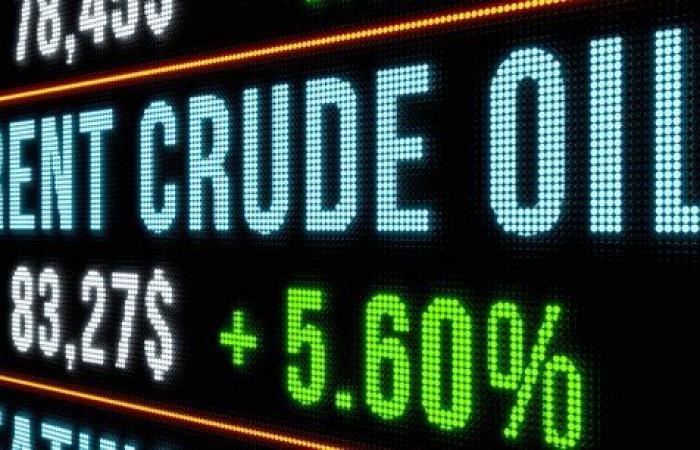Oil prices are rising this Monday, exactly one year after the attack by the Palestinian Islamist movement Hamas in Israel, which led to war in the Gaza Strip. Around 5:30 p.m. (Paris time), the price of a barrel of Brent from the North Sea, for delivery in December, increased 2.63% and crossed the symbolic mark of 80 dollars. Its American equivalent, a barrel of West Texas Intermediate (WTI), for delivery in November, gained 2.85%, to $76.5.
Last Friday, this same trend was already observed. Around 7 p.m. in Paris, the price of a barrel of Brent from the North Sea, for delivery in December, rose 1.14% to $78.77. Its American equivalent, a barrel of West Texas Intermediate (WTI), for delivery in November, gained 1.35% at the same time to $74.99.
« It would not be surprising to see prices quickly rise above $85 at the slightest escalation of the conflict. », Estimated this Monday with AFP, Stephen Innes, analyst at SPI Asset Management, for whom the 100 dollar mark is “ far from being impassable ».
A moderate increase
For now, the rise in oil prices is “relatively moderate compared to 90 dollars per barrel two months ago”nuanced to The Tribune Philippe Chalmin, professor of economic history at Paris-Dauphine University and specialist in raw materials. Same story for Olivier Gantois, president of Ufip Énergies et Mobilités, who observed that there was “no surge in oil prices”. And this, even if the price of a barrel has increased by almost 10% in ten days.
Oil: why prices are not soaring despite tensions in the Middle East
“Price variations were much more violent when Russia, the world’s third largest producer, invaded Ukraine in February 2022”he noted, recalling that the barrel had gone from 70 to 120 dollars.
And to add that as it stands, “the oil markets do not predict or believe in a more widespread conflagration in the region, with consequences which would be very significant on the availability of crude oil at the global level”analyzes Olivier Gantois.
The Israeli-Palestinian conflict as the primary cause
The reasons for this bullish oil price, and at its highest level in more than a month, are multiple. The first is the uncertainty linked to the Israeli-Palestinian conflict, of which “ no outcome is in sight for the conflict which risks spreading further », Tells AFP this Monday Susannah Streeter, analyst at Hargreaves Lansdown.
Investors fear an attack by Israel on Iranian infrastructure which would cut off supplies to one of the ten largest oil producers. But Iran, which produced 3.4 million barrels per day in August according to the International Energy Agency (IEA), also has no interest in an escalation, and would “the first victim”, according to Philippe Chalmin.
Battle over “made in France” oil
At the same time, the publication on Friday of a report on the American employment market, more solid than expected, reassures the markets about the capacity of American demand to increase global oil demand, depressed for several months by the slowdown in the Chinese economy.
« Increased energy demand in the United States will help offset continued low oil demand in China », Explains analyst Susannah Streeter on this subject. However, analysts expect an abundance of barrels in the coming months, which will hold back prices despite increased geopolitical risks.
Chinese demand pulls prices down
If the rise in oil prices is contained for the moment, it is also because “at the same time, markets fear a slowdown in China’s growth, which would stop increasing its crude oil needs, which would push prices down”added Olivier Gantois.
As a reminder, China is in the grip of an unprecedented crisis in its vast real estate sector, sluggish confidence among households and businesses, which is penalizing consumption, while geopolitical tensions with Washington and the European Union threaten its foreign trade. Result, “fears of a slowdown in China are almost as great as fears of a conflagration in the Middle East”according to the president of Ufip Énergies et Mobilités.
Oil: hesitant prices after contradictory data in China
Another downward factor: Saudi Arabia, which has excess capacity estimated at 3 million barrels per day, and which has no interest in prices increasing too quickly, recalls Thierry Bros. “What OPEC is aiming for (Organization of the Petroleum Exporting Countries, editor’s note), it is a price of around 80 to 90 dollars per barrel: above 90, this would allow the energy transition to take place more quickly and below 80, it does not balance their accounts”explained the researcher.
(With AFP)






